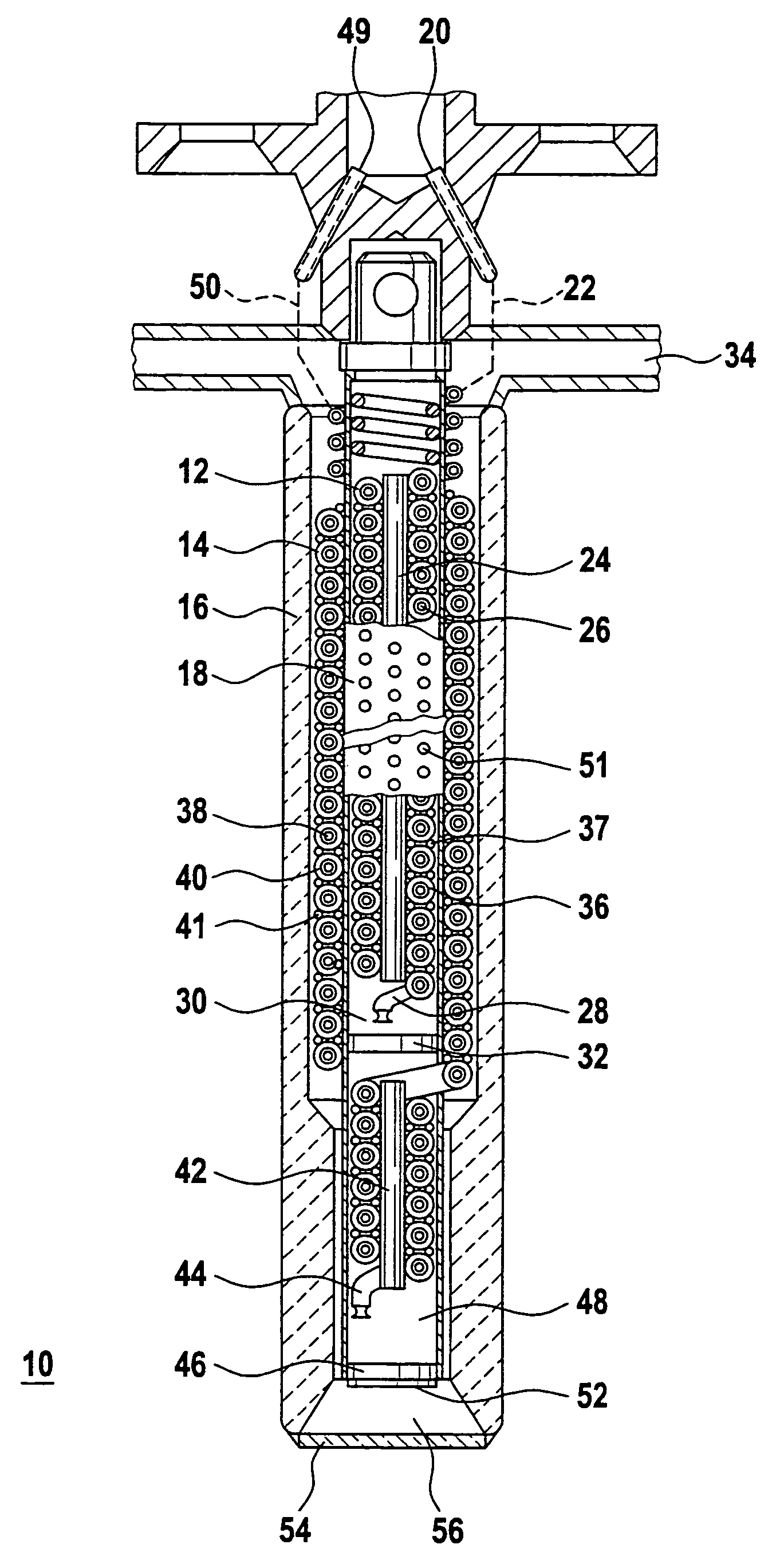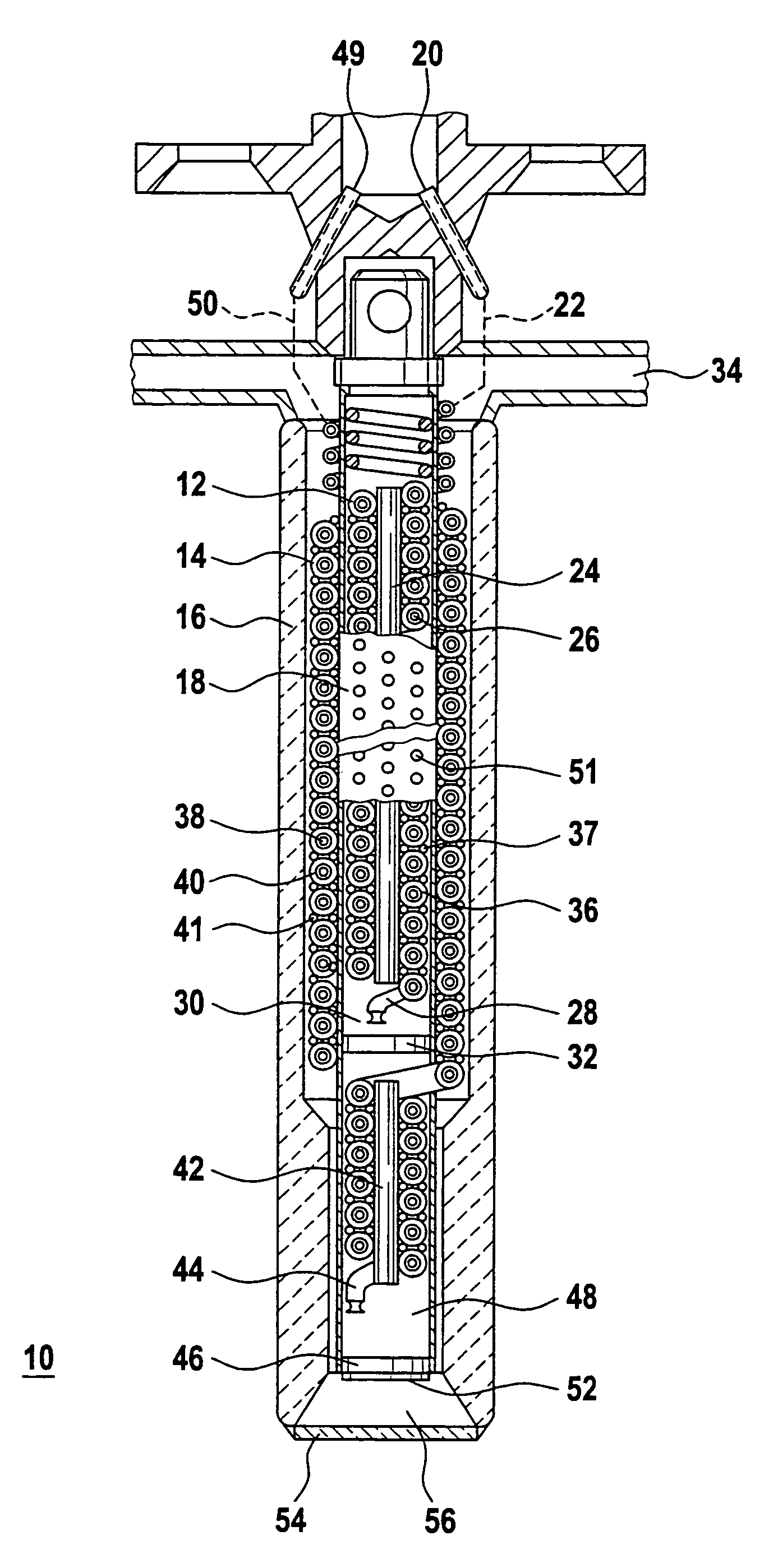Cooling apparatus
a technology of cooling apparatus and detector, which is applied in the direction of lighting and heating apparatus, fluid pressure control, instruments, etc., can solve the problems of reducing the maximum cooling capacity that can ultimately be realized, and achieve the effects of improving heat transfer, improving thermal insulation, and shortening cooling tim
- Summary
- Abstract
- Description
- Claims
- Application Information
AI Technical Summary
Benefits of technology
Problems solved by technology
Method used
Image
Examples
Embodiment Construction
[0036]The cooling apparatus 10 has an inner countercurrent heat exchanger 12 and an outer countercurrent heat exchanger 14. The two countercurrent heat exchangers 12, 14 are arranged in a thermally insulating housing 16. The inner countercurrent heat exchanger 12, the outer countercurrent heat exchanger 14 and the housing 16 are positioned concentrically with respect to one another. The inner countercurrent heat exchanger 12 is spatially separated from the outer countercurrent heat exchanger 14 by a thin metallic outer sleeve 18.
[0037]A first high-pressure gas flows out of a pressure vessel (not shown) into the inner countercurrent heat exchanger 12 via a gas connection 20 and a feed line 22. The first high-pressure gas flows through a tube 26 arranged helically around an inner sleeve 24 of poor thermal conductivity until it reaches an expansion nozzle 28 located at the end of the tube 26. The first high-pressure gas is expanded at the expansion nozzle 28 and as a result is cooled i...
PUM
 Login to View More
Login to View More Abstract
Description
Claims
Application Information
 Login to View More
Login to View More - R&D
- Intellectual Property
- Life Sciences
- Materials
- Tech Scout
- Unparalleled Data Quality
- Higher Quality Content
- 60% Fewer Hallucinations
Browse by: Latest US Patents, China's latest patents, Technical Efficacy Thesaurus, Application Domain, Technology Topic, Popular Technical Reports.
© 2025 PatSnap. All rights reserved.Legal|Privacy policy|Modern Slavery Act Transparency Statement|Sitemap|About US| Contact US: help@patsnap.com


